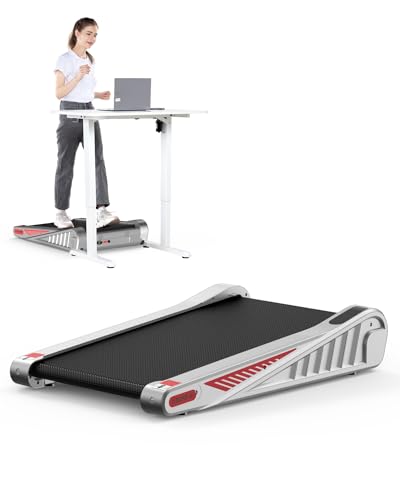Exploring the Benefits of Walking Pads: The Non-Electric Choice
In the era of contemporary physical fitness services, where technology rules supreme and elegance is typically related to electrical makers, a brand-new trend is emerging in useful workout: the non-electric walking pad. These basic yet efficient pieces of equipment are recording the interest of fitness enthusiasts and casual walkers alike.
In this comprehensive guide, we will explore what walking pads are, their benefits, comparisons with conventional treadmills, and supply responses to frequently asked questions.
What is a Walking Pad?
A walking pad is a compact workout platform developed mainly for walking, running, or light running. Unlike standard treadmills which rely on electrical power, non-electric walking pads operate on a manual system. Users move themselves forward by walking or running, harnessing their own body weight.
Key Features of Non-Electric Walking Pads:
- Compact Design: Most walking pads are lightweight and foldable, making them easy to store and transportation.
- User Controlled: The speed and strength of the workout depend upon the user's own effort.
- No Plug Required: Perfect for energy-conscious people, these pads require no power usage.
- Silent Operation: A quieter option to electric treadmills, making them ideal for apartment or condos or shared areas.
Benefits of Using Non-Electric Walking Pads
Using a non-electric walking pad presents a variety of benefits. Below are some of the popular benefits:
| Benefit | Description |
|---|---|
| Economical | Non-electric designs are typically more budget friendly than their electric equivalents, making them accessible to a broader audience. |
| Boosted Flexibility | Users can stroll or jog at their own pace, which is particularly helpful for beginners or those recovering from injuries. |
| Space-Saving Design | Due to their compact size, walking pads fit conveniently in smaller sized areas, making them ideal for office or home usage. |
| Low Maintenance | With no electrical components, these pads need minimal upkeep and are less most likely to break down. |
| Eco-friendly | No electricity suggests no environmental impact from energy consumption, making them a terrific option for eco-conscious consumers. |
Comparing Non-Electric Walking Pads to Traditional Treadmills
| Function | Non-Electric Walking Pad | Conventional Treadmill |
|---|---|---|
| Power Source | Manual (user-powered) | Electric (plugged in) |
| Cost | Lower upfront expense | Higher initial investment |
| Size | Compact and portable | Larger, frequently stationary |
| Noise Level | Extremely quiet | Can be loud, depending upon motor and use |
| Customization | Minimal user settings | Comprehensive settings (speed, incline, programs) |
| Physical Engagement | Greater strength and effort needed | Simpler to utilize but might encourage less engagement |
How to Use a Non-Electric Walking Pad
Utilizing a non-electric walking pad is uncomplicated. Here's a simple detailed guide:
- Set Up: Place the walking pad on a flat, stable surface area.
- Adjust the Pad: Ensure that it is at a comfy position for usage-- most pads have adjustable angles to customize the walking experience.
- Warm-Up: Before making use of the pad, perform a short warm-up routine, which can consist of mild stretching.
- Start Walking: Step onto the pad and begin walking at a moderate pace. As your speed increases, you will see the pad moving.
- Monitor Your Intensity: Pay attention to your heart rate and how you feel. Change your speed according to your fitness level.
- Cool Down: Gradually lower your speed before stepping off the pad, followed by cooldown stretches.
Best Practices for Using Walking Pads
To make the most of the benefits of non-electric walking pads, consider the following tips:
- Incorporate Variety: Alternate between walking and jogging for a full-body workout.
- Engage Your Core: Maintain good posture by keeping your core engaged while utilizing the pad.
- Hydration: Remember to hydrate before and after your exercise.
- Consistency: Aim to use the walking pad regularly. Start with 15-20 minutes and gradually increase the duration.
Often Asked Questions
1. How efficient are non-electric walking pads for weight reduction?
Non-electric walking pads can be effective for weight reduction when utilized regularly in conjunction with a healthy diet plan. Considering that they require more effort, they can allow greater caloric expense throughout exercises.
2. What is Treadmill Non Electric of a lot of walking pads?
Many non-electric walking pads can support people as much as 250-300 pounds, depending upon the design. Constantly check the manufacturer's specs for exact information.
3. Are there any recommended brands for walking pads?
Some popular brands consist of InMovement, ProForm (manual models), and ECHANFIT, each using a variety of functions tailored to varied user preferences.
4. Can non-electric walking pads be utilized outdoors?
These walking pads are generally created for indoor usage. Using them outdoors might expose them to weather conditions that might affect their resilience.
5. How do I save a walking pad?
Numerous non-electric walking pads are foldable. Just fold them up and store them in a closet, under a bed, or any hassle-free space.
Non-electric walking pads use a distinct and reliable aerobic workout choice that highlights simpleness and accessibility. By allowing users to create their physical fitness routine without the restrictions of power cables and complicated user interfaces, these pads empower individuals throughout various fitness levels.
For anyone trying to find an affordable, space-saving, and efficient option to conventional workout devices, checking out the world of non-electric walking pads may be the ideal next action in their fitness journey. By picking to buy among these flexible tools, people can foster much healthier routines while delighting in the empowering experience of movement on their own terms.

